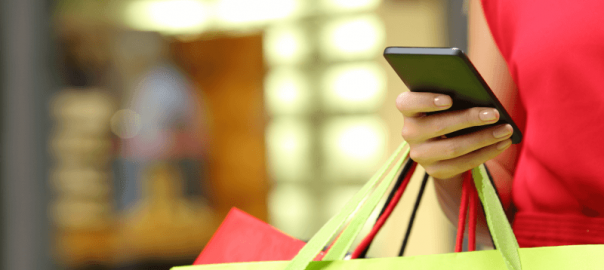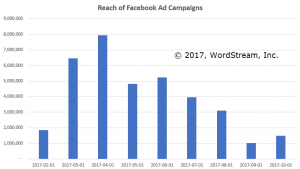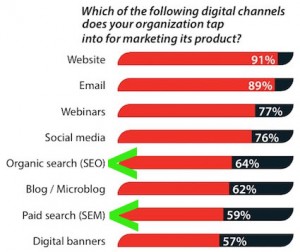As the battle between online and in-store shopping ramps up, columnist Allan Haims explains what brick-and-mortar retailers can do to innovate and come out on top.
 The stories about major brick-and-mortar retailers closing physical locations in favor of online-only models are piling on, garnering attention with hyperbolic doom-and-gloom headlines. However, there is a different, more telling side to the story.
The stories about major brick-and-mortar retailers closing physical locations in favor of online-only models are piling on, garnering attention with hyperbolic doom-and-gloom headlines. However, there is a different, more telling side to the story.
Clearly, there are too many malls and too many stores, and the internet is impacting the retail landscape significantly. As a result, a “survival of the fittest” market dynamic has prevailed, with many innovating retailers coming out on top in the fight between online and in-store.
These retailers are the ones willing to move beyond traditional strategies for engaging today’s consumers — those that connect with their target shoppers via mobile, listen to their preferences, and then act immediately to give them what they want. They are offering unique, high-quality merchandise and personalized experiences, as well as earning swaths of new and repeat customers.
Shoppers still prefer to make purchases in the store rather than online. They want to try on clothes and shoes and see new fashions in person, as well as be able to return merchandise they’ve bought online to physical stores. However, the missing pieces of the brick-and-mortar retail picture must be told so that brands can learn how best to implement beneficial changes and remain a vital component of the retail revolution.
Promotions are here to stay
While most brick-and-mortar retailers would obviously like to sell more merchandise at regular “clean ticket” prices, today’s competitive shopping climate and consumer behavior dictate the price. Shoppers are typically looking for sales and deals across all channels they are shopping and have a value mindset, meaning they want quality items for a reasonable price, but they will also pay a premium price for the right product offered at the right time.
Instead of running the same promotions over and over, successful retailers are monitoring what works versus what doesn’t, as well as connecting with shoppers in a more personal way.
Mobile engagement is key for attracting and keeping today’s shoppers interested. But retailers must go a step further to study shopper patterns and preferences and then be ready to give them relevant promotions when they are ready to make a purchase in the store or a nearby location.
Email isn’t the holy grail of one-to-one consumer engagement
Some retail brands make the mistake of thinking email can and should be used with abandon. It’s certainly a helpful marketing channel in the lens of the entire marketing mix, but it must be used sparingly and in a targeted way to be effective.
Shoppers who share their email addresses have opted in to receive campaigns and promotions, but they will just as quickly opt out if they receive a barrage of emails or if the messages they get are either irrelevant or not tailored to them.
Smart retailers have expanded their mindset so that email is part of their strategy but not the linchpin. For example, they may use it to confirm a loyalty program signup but then tap into other one-to-one engagement strategies — such as using mobile to follow up on items abandoned in a shopping cart and offering a promotion to buy the items in store.
The in-store shopping experience 2.0
We’ve all seen the reports of dying retailers and malls, with major anchor stores shuttering. Clearly, this is not the mall model to emulate — but there are plenty of others doing it right. For example, Aventura Mall in Miami is undergoing a 300,000-square-foot expansion, and Beverly Center in Los Angeles is in the middle of a $500 million “re-imagination” including a local art installation program and new concepts and retail innovations throughout the structure.
Retailers also can engage more shoppers with in-store perks like personalized shopping experiences and offers delivered via mobile based on prior purchases (in store or online), digital engagement patterns, seasonal trends and so on. This can be done with native retailer apps (which suggest that the consumer is already a loyal customer of the brand), but also with “casual” shoppers who provided their email address or phone number at some point and are in proximity of the store via WiFi.
Appeal to Gen Z
Connecting with millennials has been a priority for many retailers for quite some time, but forward-thinking brands are also paying attention to Generation Z shoppers under the age 20 who were born with digital devices in the palms of their hands.
While millennials have shifted from the traditional purchases to spending more of their time and money on experiences, members of Gen Z are back in the malls and retail centers, shopping in physical stores, and they are more likely to make impulse purchases.
Despite their digital immersion, the majority of the Gen Z demographic still prefers to visit stores to make purchases, according to a recent study by Accenture. Additionally, the study reports that more of them engage with sales associates, comparison-shop on mobile devices in the store and communicate with friends and family about purchases in person or via social media, texting or mobile.
To tap into the market of Gen Z buyers, retailers must deliver a digitally inclusive in-store experience that offers interactive and informed sales associates who can speak both the brick-and-mortar and digital lingo.
Ultimately, retailers that are innovating — both with their wares and by engaging consumers using smart shopping strategies — will reign supreme in the new retail revolution.
Some opinions expressed in this article may be those of a guest author and not necessarily Marketing Land. Staff authors are listed here.
Marketing Land – Internet Marketing News, Strategies & Tips
(46)









